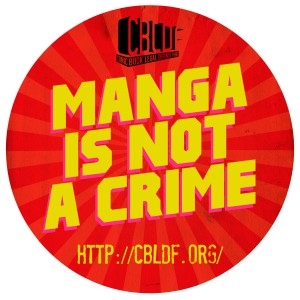 Just a few months after a UN envoy recommended that Japan ban certain types of manga and anime to somehow protect real children from abuse, a separate UN committee has now entered the fray by urging the government to ban “the sale of video games or cartoons involving sexual violence against women.” What the committee fails to recognize, though, is that the sexual content in manga and anime that can seem extreme to Western eyes is largely driven by female readers and creators. Take for example Keiko Takemiya, a groundbreaking creator recently featured in a BBC article as “the godmother of manga sex in Japan.”
Just a few months after a UN envoy recommended that Japan ban certain types of manga and anime to somehow protect real children from abuse, a separate UN committee has now entered the fray by urging the government to ban “the sale of video games or cartoons involving sexual violence against women.” What the committee fails to recognize, though, is that the sexual content in manga and anime that can seem extreme to Western eyes is largely driven by female readers and creators. Take for example Keiko Takemiya, a groundbreaking creator recently featured in a BBC article as “the godmother of manga sex in Japan.”
In 1976 when Takemiya began serializing her now-classic manga Kaze to Ki no Uta in the magazine Shōjo Comic, she was part of a wave of female creators who transformed girls’ manga from chaste romances to what the BBC terms “a genre many consider now worthy of literary criticism, heavily influenced by Western authors like Herman Hesse, Bram Stoker, Dumas and Dostoyevsky, drawing on their perennial themes of love, hate, life and death.” Kaze to Ki no Uta is an early example of yaoi, or boy’s love, manga, starring two boys in a 19th-century French boarding school who begin to heal from past traumas — sexual and otherwise — through a homosexual relationship.
Takemiya, now the president of Kyoto Seika University, recalls that she “had to earn the right to do Kaze to Ki no Uta,” battling with editors for years to convince them that her story was worthwhile and would be well-received by the target audience of young women. In 2010 when Tokyo’s municipal government expanded its Youth Healthy Development Ordinance to further restrict manga and anime depictions of minors in sexual situations, Takemiya protested vociferously and “pointed out her book, seen as a classic, would have been banned.”
Another manga expert, Yukari Fujimoto of Meiji University, points out that “a ban on sexual violence in manga would effectively be a ban on the hard-won achievements and expression of female artists. Banning artistic expression will neither change or improve reality.” That’s why the recent recommendations from the UN Committee on the Elimination of Discrimination against Women (CEDAW) are of particular concern. In advance of a recent meeting with Japanese government officials on ways to improve gender equality in the country, CEDAW announced that one “possible issue for discussion” would be “banning the sale of video games or cartoons involving sexual violence against women.” (Lest one think that CEDAW simply lacks cultural understanding of anime and manga, note that the committee is currently chaired by Yoko Hayashi, a respected Japanese lawyer. The other 22 members, all women, come from countries around the world.)
As manga translator and friend of CBLDF Dan Kanemitsu points out in his blog post, it is difficult to understand why CEDAW would place fictional sexual violence, however disturbing it may be, on the same footing as important real-world issues for women such as equal pay, employment discrimination, and “compensation for women with disabilities sterilised against their will.” In its response to the report, the Japanese government pointed out that video games and anime are regulated by industry ratings boards, while most prefectures already have ordinances similar to Tokyo’s which ban the sale to minors of “books designated as detrimental.” CEDAW was not satisfied with that response and reiterated its recommendation early this month in no uncertain terms:
Effectively implement existing legal measures and monitoring programmes in order to regulate the production and distribution of pornographic material, video games and animation that exacerbate discriminatory gender stereotypes and reinforce sexual violence against women and girls.
Although yaoi like Kaze to Ki no Uta by definition chronicles young men in sexual situations both consensual and non, Takemiya firmly believes that it has helped many female victims of sexual violence begin to heal emotionally and psychologically. She recalls a letter from a reader who had been raped by her father in the 1970s, when such topics were still relatively rare in mainstream manga. The young woman “never thought something like that happened to other people, but reading my manga told her that she wasn’t alone and that saved her,” says Takemiya. Referring to the whole breadth of manga available today, she concludes that “I may have opened a Pandora’s box of sexual expression, but the box had to be opened for Hope to come out.”
Help support CBLDF’s important First Amendment work in 2015 by visiting the Rewards Zone, making a donation, or becoming a member of CBLDF!
Contributing Editor Maren Williams is a reference librarian who enjoys free speech and rescue dogs.